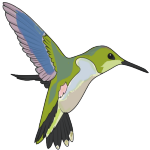What You Need to Know About Your Child’s Asthma
What does it mean for parents and families when their child is diagnosed with asthma?
By Dr. Tom Kovesi, M.D. F.R.C.P.(C), Pediatric Respirologist
It’s no coincidence that asthma rates seem to peak when kids go back to school! Asthma is the most common chronic disease in children. Asthma attacks rates peak in September, when children return to school and start swapping cold viruses between each other and then bring them home to their younger siblings and then again in the spring, when tree and grass pollen levels are high.
Here’s what you should know about asthma in children.
What are the symptoms and causes of asthma?
Asthma causes coughing, wheezing (a whistling sound coming from the chest), and/or difficulty breathing or chest tightness, after exposure to one or more asthma triggers. During asthma attacks, the airways (or bronchial tubes) become narrowed, because the airway walls become inflamed and swollen, muscles around the airways tighten, and because the airways produce excess amounts of mucous. In children with asthma, symptoms generally vary in severity over time. In young children (preschool aged or younger), asthma episodes are usually triggered by viral upper respiratory infections, such as colds or influenza. In school aged kids and teens, asthma attacks are still often triggered by colds, but symptoms are often brought on by exposure to things the child is allergic to, or by exercise. The increased amount of mucous produced by children with asthma can often look like pneumonia. Common allergies that can cause asthma attacks or worsen asthma include animals, such as dogs, cats, and horses, dust mite, tree or grass pollens, or ragweed pollens, and molds. Food allergy is a very rare cause of asthma. Cigarette smoke exposure and air pollution worsen asthma in children. Many children with asthma develop symptoms with exercise.
How should you treat asthma?
The best treatment for asthma is prevention. Children with asthma should not be exposed to cigarette smoke, and are best kept inside during air pollution advisory days. If your child has allergies that cause asthma attacks, your child should avoid the things he or she is allergic to. The next line of therapy is medications called bronchodilators. These medications temporarily relax the muscles around the airways when they’re tightened up. Ventolin®, the familiar “blue puffer” is a bronchodilator. Bronchodilators should be used up to every 4 hours to reduce asthma symptoms. If your child needs his or her bronchodilator more than every 4 hours, he or she should be assessed by a health professional. A bronchodilator can also be used before exercise, to prevent exercise-induced asthma. If your child needs their bronchodilator more than three times a week on a regular basis, it’s a sign that their asthma is not well controlled, and the child should be reassessed by their doctor. When a short-acting bronchodilator is used regularly, it starts to get less effective.
Children with more severe or frequent asthma symptoms (such as those having emergency visits or needing their bronchodilator more than 3 times per week) benefit from using a preventative, or anti-inflammatory, asthma medication. These medications reduce inflammation in the lungs, making the airway less sensitive to whatever it is that triggers the child’s asthma. Inhaled steroids are the most effective preventative medication. FloVent®, the familiar orange puffer, is an inhaled steroid. Inhaled steroids take 1 to 6 weeks to start working, so it’s important that they are used regularly, every day, even when your child feels well, during the season(s) when your child is prone to having asthma attacks or symptoms. Inhaled steroids have little or no effect when used only during attacks. In usual doses, inhaled steroids are very safe, even for long-term use. Another anti-inflammatory medication is Singulair®. This medication is given in pill form. For medications given by inhaler (or puffer), it’s very important that you know how to administer the inhaler correctly. A health care professional can show you how.
What are signs of a severe asthma attack?
Signs of a severe asthma attack include severe wheezing or difficulty breathing, very rapid breathing, having the spaces between the ribs getting sucked in, turning blue, needing a bronchodilator more than every 4 hours, or working so hard at breathing that the child becomes tired. Children having a severe asthma attack should not get their bronchodilator (such as Ventolin®) at home more than every 4 hours. They should be seen, as soon as possible, in an emergency department. If your child is having a very severe asthma attack, you should call 911.
Do children outgrow asthma?
Children who get asthma only with colds quite frequently outgrow their asthma, some time between school-age and adolescence. Children who have asthma and also have allergies are less likely to outgrow their asthma, although it sometimes gets milder as they get older.
